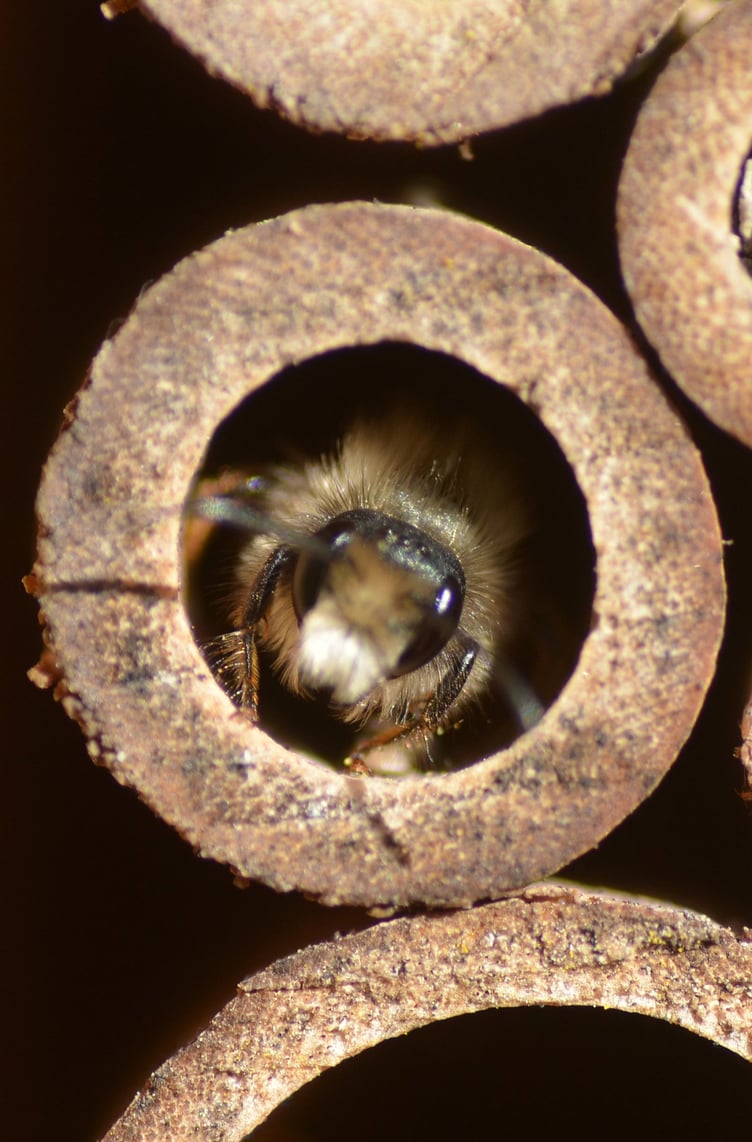The Manx Wildlife Trust is the island’s leading conservation charity, protecting the incredible species that call the Isle of Man home by understanding what they need and creating spaces where they can flourish. The range of life (biodiversity) on theisland is much more extensive than most people realise, and this year these articles have been looking at the fascinating tiny world of invertebrates.
We all know how hard invertebrates work for our ecosystems, with various job roles such as aerating soil, breaking down dung, helping with the decay of wood and leaves, pollinating and controlling plant pests.
The rate of loss of insects is much faster than that of higher profile wildlife such as birds and mammals. The UK extinction rate for insects is eight times higher!
So how can we help them?
This month we are looking at ways to create invertebrate homes and havens and redress loss of habitat.
Today you can buy lots of products to help bees and bugs but really the best way is just to leave space for nature in your garden.
Your garden doesn’t just have to be a large space such as an allotment, even a hanging basket with plants left to rot can help.
Why not make it a resolution to leave a corner of your garden with a pile of leaves in for the millipedes to break down?
It will also help nourish your soil and feed the birds.
Don’t trim back all those plant stems that have died off, those hollow stems such as elder and buddleia provide fabulous homes for ladybirds and lacewing larvae.
Bundle some up and place in a sheltered corner of your yard.
Why not create a pile of logs and twigs, try a random pile, or stack logs into a pyramid?
Even logs sunk in like a post are beneficial.
Whilst planning the seeds/plants to buy for your garden why not grow plants to attract hoverflies such as yarrow, alyssum, poached egg plant, lemon balm, potentilla, marigold?
Or try attracting solitary bees in by tempting them with lavender, fuchsia, heather, viburnum, marjoram and cat mint.
Having flowers spread throughout the year from spring to autumn is a great help for pollinators.
Those early spring dandelions are a lifesaver to emerging queen bees who need to top up their body reserves after hibernating throughout the winter.
I am often asked if bee homes really do work and the answer is yes, they are great for mason bees and leafcutter bees.
However, try to buy ones which have paper tubes inside which you can remove after a year, or make sure that you wash the bee home down every other year to help prevent the spread of diseases.
If you have the leaf cases of leafcutter bees in your bee home, you can take these out and over winter them in a shed, bringing them back out again in early April.
This prevents the cocoons being predated by birds, who have learned that there are tasty food parcels to be found in bee homes!
Bug homes are often frequented by woodlice and spiders too, butterflies however prefer your garage or shed to hibernate in.
So why not make 2023 your year to help the Manx tiny wildlife world and pop a bug home on your Christmas present list?
If you have enjoyed our articles this year, find out more by joining the Invertebrate Group. You can find details of the meeting dates on the Manx Wildlife Trust website mwt.im

.jpeg?width=209&height=140&crop=209:145,smart&quality=75)

.jpeg?width=209&height=140&crop=209:145,smart&quality=75)

Comments
This article has no comments yet. Be the first to leave a comment.